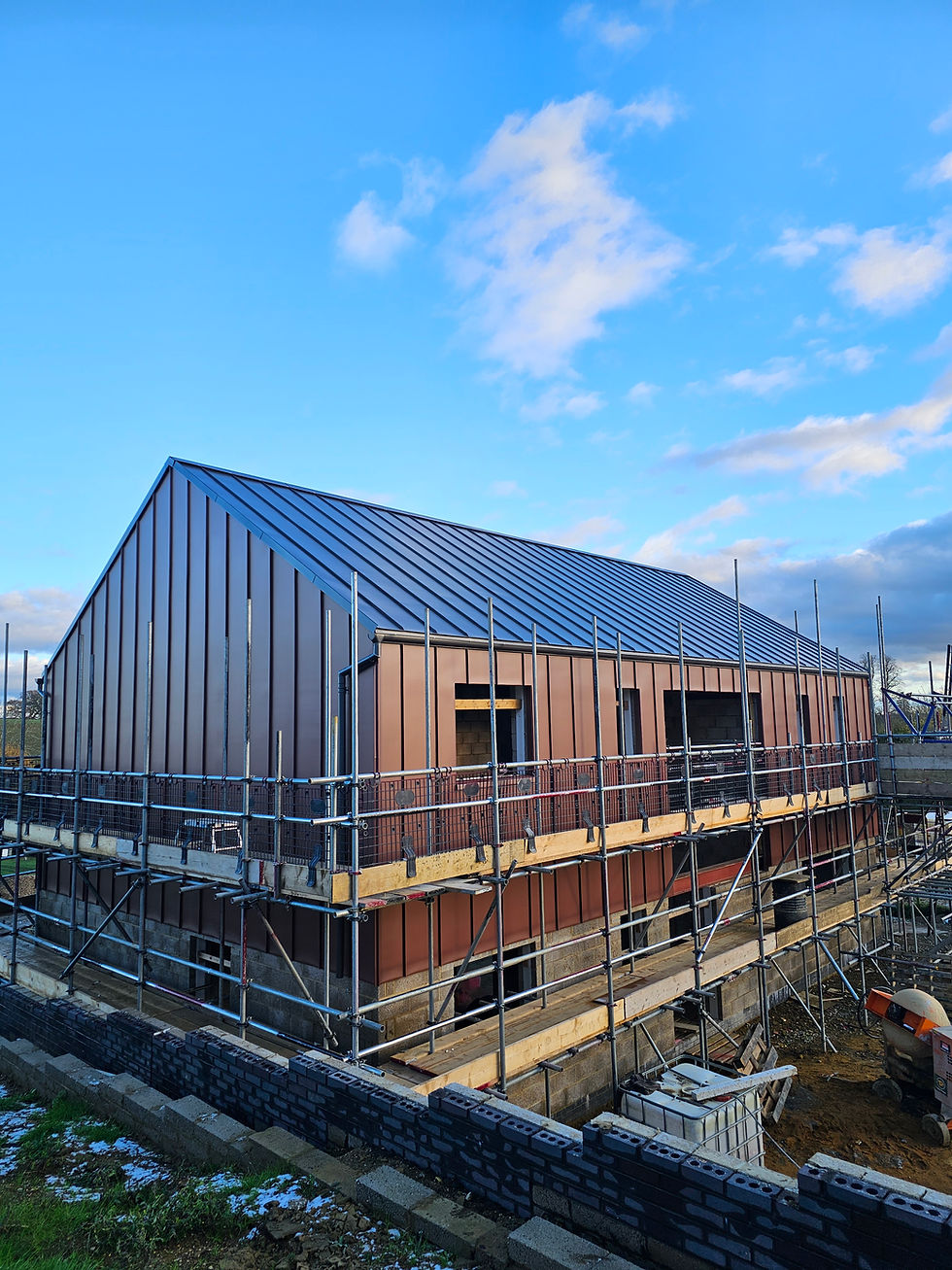Exploring the Sustainable Benefits of Zinc and Copper for Enhancing Metal Roofs and Rainwater Systems in Architecture
- James Killick
- Jun 21
- 3 min read

In today's architectural landscape, the importance of using sustainable materials cannot be overstated. With a growing awareness of environmental issues, architects are increasingly drawn to materials that not only enhance the beauty of buildings but also support environmental sustainability. Among these materials, zinc and copper stand out as excellent choices for metal roofs, rainwater goods, and cladding. Their unique properties and benefits make them ideal for modern architectural efforts focused on sustainability.
Unique Properties of Zinc and Copper
Zinc and copper are metals renowned for their durability and sustainability. Zinc, for example, is highly resistant to corrosion. This resistance allows zinc roofing to last for 50 years or more with minimal maintenance, significantly reducing the need for replacements and waste. Studies show that zinc can reduce rooftop waste by up to 80% over its lifetime.
Copper, similarly, is a robust material that develops a beautiful green patina over time, which not only enhances its aesthetic appeal but also protects it from corrosion. This natural aging process means copper can maintain its function and beauty for over 100 years, making it a smart long-term investment for any project. Both metals can continue to perform structurally while enriching the visual landscape of a building.
Environmental Benefits
Using zinc and copper in architecture offers considerable environmental advantages. Both metals are fully recyclable; research indicates that approximately 90% of copper and 95% of zinc can be recovered and repurposed at the end of their lifecycle. This aligns seamlessly with the circular economy model, which promotes resource efficiency and reduces waste.
Moreover, advancements in mining and production techniques have led to more sustainable practices. For instance, contemporary methods in zinc mining consume up to 40% less energy compared to older techniques. By incorporating these sustainable materials into building designs, architects can significantly lower the environmental impact of their projects.
Enhancing Water Management
Metal roofs crafted from zinc and copper are instrumental in effective rainwater management. Their smooth surfaces facilitate quick runoff of rainwater, minimizing the chances of pooling that can lead to leaks or structural damage. Statistics indicate that buildings with metal roofs can reduce runoff by 20% due to improved water flow dynamics.
In addition, copper possesses natural anti-bacterial and anti-fungal properties, making it an excellent option for systems intended for potable water. This characteristic ensures that rainwater harvested for reuse remains safe for drinking and other domestic uses. By installing zinc and copper gutters and downspouts, architects not only improve functionality but also elevate the overall aesthetic of the building.
Aesthetic Appeal and Customization
The aesthetic qualities of zinc and copper are unmatched, allowing for seamless integration into a variety of architectural styles, from contemporary to classic. Both metals can come in a multitude of colors and finishes, which means architects can create custom solutions tailored to their building's design vision, all fabrication is done onsite with standing seam machine and a 2 meter folder.
The aging process of these metals can be an asset rather than a drawback. Over time, copper develops a rich patina that can be a design focal point, showcasing the material's longevity and character. Similarly, zinc can age gracefully, contributing to a building's charm and uniqueness. This natural evolution exemplifies the enduring quality of these materials, making them statements of sustainability.
Embracing Sustainable Design
Zinc and copper represent the future of sustainable architecture, particularly in applications such as metal roofs, rainwater systems, and cladding. Their inherent properties, along with their environmental and aesthetic benefits, position them as ideal choices for architects focused on creating designs that are both beautiful and responsible. As we progress, integrating these sustainable materials will be essential for building structures that work in harmony with the environment while offering lasting appeal.
By choosing to incorporate zinc and copper into your architectural designs, you can play a vital role in shaping a more sustainable future for buildings, making an impact that goes beyond aesthetics.
James killick
KILLICKZINC LIMITED





Comentarios